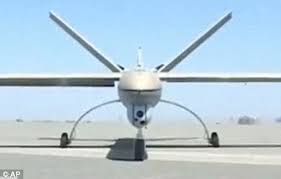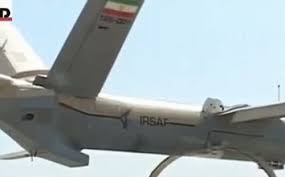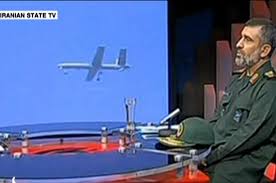Muslim Pilgrims Mark Eid al-Adha in
Mina
|
(Ahlul Bayt News Agency) - On Friday, Muslim pilgrims mark Eid al-Adha (Feast of the Sacrifice) holiday, when they proceed to Mina, a small village east of Mecca, and throw stones at the devil.
Following the symbolic stoning of the devil, Muslim pilgrims also perform the ritual of sacrificing sheep and cattle, marking the first day of Eid al-Adha.
The day marks the peak of the Hajj pilgrimage and Muslims around the world celebrate the following three days in honor of the occasion.
On Thursday, Iranian President Mahmoud Ahmadinejad extended his congratulations on the occasion in separate letters to the leaders of the Muslim world as well as the secretary general of the Organization of Islamic Cooperation, Ekmeleddin Ihsanoglu.
The rituals of Hajj pilgrimage officially started on Wednesday when around three million pilgrims launched their journey to Mina.
Hajj is considered as one of the five pillars of Islam and the largest act of mass pilgrimage in the world.
The holy pilgrimage is also a demonstration of Muslims’ unity and their submission to Allah.
Every able-bodied Muslim is obliged to perform the pilgrimage at least once in his or her lifetime.
 Selamat Hari Raya Idul Adha 1433 H Selamat Hari Raya Idul Adha 1433 H |

Menurut Kantor Berita ABNA, 'Aid adalah masa pergantian. Sebuah gerakan alami menuju arah kesempurnaan. Setiap manusia yang mengalami kemajuan dan peningkatan ilmu, ma'rifat, kebahagiaan dan menemukan makna baru dalam kehidupannya disebut sedang mengalami 'aid. Riwayat yang masyhur dari Amirul Mukminin, "Hari dimana manusia pada hari itu tidak melakukan kemaksiatan dan keburukan maka itu adalah hari 'Aid baginya." Seseorang yang melakukan kemaksiatan atau keburukan maka pada hakekatnya baik secara lahiriah dan batiniah menjauhkan ia pada kebahagiaan dan kesempurnaan, sehingga bagi yang tidak melakukannya pantaslah baginya merayakannya.
Kisah Idul Qurban
Pada malam kesembilan dan sepuluh Zulhijjah, Nabi Ibrahim as menerima wahyu untuk menyembelih anaknya Ismail dalam rangka mendekatkan diri kepada Allah SWT di Mina dekat Makah.
Menyembelih sendiri anak kesayangan adalah sebuah ujian yang sangat besar dan berat. Namun ayah dan anak itu dengan kebesaran jiwanya mampu melewatinya. Nabi Ibrahim as tanpa sedikitpun rasa berat hati membawa puteranya ke Mina dalam keadaan tangan dan kakinya terikat, dengan niat memenuhi titah Ilahi beliau hendak menyembeli puteranya sendiri. Nabi Ismail as pun tanpa memiliki rasa keberatan apalagi penentangan ikhlas mengemban perintah Ilahi tersebut.
Namun atas kehendak Ilahi, sebelum pisau tajam menyentuh kulit leher nabi Ismail As, Allah SWT berfirman kepada nabi Ibrahim, "Wahai Ibrahim, kamu berhasil melalui ujian Ilahi dengan baik. Sekarang lepaskan anakmu, dan pada tempatnya letakkan kambing yang Aku kirimkan padamu sebagai hadiah untuk kau kurbankan."
Nabi Ibrahim as pun kemudian merasa sangat bahagia dengan firman Allah SWT yang membatalkan perintah untuk menyembelih putera yang teramat disayanginya. Nabi Ibrahim as pun mencium kening anaknya dan pada posisinya, ia menempatkan kambing dari surga yang telah dikirimkan untuknya untuk disembelih. Peristiwa tersebut diabadikan umat Islam sebagai hari Idul Qurban.
Sampai saat ini umat Islam dipenjuru dunia, baik yang sedang berhaji ataupun tidak, yang berada di Mina ataupun di tempat lain, setiap 10 Zulhijjah menyembelih unta, sapi, domba atau kambing sebagai kurban atas perintah Allah SWT.
Amalan Malam dan Hari Idul Qurban
Malam 10 Zulhijjah adalah malam yang penuh dengan keberkahan. Malam dimana pintu langit terbuka untuk menerima do'a-do'a yang dipanjatkan. Adapun amalan yang disunnahkan dilakukan pada malam tersebut diantaranya adalah:
1. Menghidupkan malam tersebut dengan ibadah.
2. Membaca ziarah Imam Husain as.
3. Membaca do'a "Ya daaimal fadhli 'alaal Bariyya…. Dan seterusnya.
Sementara amalan yang dianjurkan dilakukan pada hari Idul Qurban diantaranya:
1. Mandi. Hukum mandi pada hari ini adalah sunnah muakkad, bahkan menurut sebagian ulama hukumnya wajib.
2. Menyelenggarakan shalat Id secara berjama'ah. Pelaksanaannya sebagaimana shalat Idul Fitri.
3. Menyembelih hewan kurban.
4. Membaca do'a Nudbah.
5. Mengumandangkan takbir.

TEHRAN, Iran -- A senior Iranian military official claimed Tuesday that Iranian-made surveillance drones have made dozens of apparently undetected flights into Israeli airspace from Lebanon in recent years to probe air defenses and collect reconnaissance data. An Israeli official rejected the account.
The Iranian official declined to give further details on the purported missions or the capabilities of the drones, including whether they were similar to the unmanned aircraft launched last week by Lebanon's Hezbollah and downed by Israeli warplanes. It also was impossible to independently verify the claims from the official, who spoke on condition of anonymity because he was not authorized to brief the media.
The Iranian assertions appear to be part of the Islamic Republic's widening strategy to boast about military advances – including warships and longer-range drones – that Tehran says could reorder the balance of power in the region as the West and its allies boost pressure over Iran's nuclear ambitions. Iran's leaders also seek to portray Israel as vulnerable to Tehran and its proxies.
But an Israeli security official rejected the Iranian claims, saying last week's interception of a drone was the first time such an infiltration had occurred. He said Israel spotted the unmanned aircraft well before it entered Israeli airspace, determined it was not "dangerous" and then shot it down over uninhabited desert according to plan. The official spoke on condition of anonymity because an Israeli military investigation is still under way.
The Iranian official claimed drones made by the Islamic Republic have made "dozens of flights over Israel" since the summer 2006 war between Hezbollah and Israel. He said Israeli defenses had been unable to detect the surveillance craft.
"The one that was shot down last week was not the first and will not be the last to fly into Israeli airspace," the official said.
Iran has often used its military moves to send messages to Israel and the U.S., which has key bases in Gulf Arab states such as the United Arab Emirates and Bahrain. Tehran last year sent warships into the Mediterranean Sea for the first time since the 1979 Islamic Revolution. Last month, Iranian military leaders gave details of a new long-range drone and tested fired four anti-ship missiles just before U.S.-led naval drills in the Gulf.
At the time, a senior Revolutionary Guard commander, Gen. Amir Ali Hajizadeh, also warned that U.S. bases in the Gulf could face retaliatory strikes if Israel attacks Iran's nuclear sites.
On Tuesday, Iranian Foreign Ministry spokesman Rahmin Mehmanparast described Iran's military developments, including drones and missiles capable of reaching Israel, as a safeguard against a possible Israeli attack on nuclear sites
Israeli Prime Minister Benjamin Natanyahu last month urged the international community to set a "red line" on Iran's uranium enrichment, which the West and its allies fear could lead to the development of atomic weapons. Iran says its nuclear efforts are only for energy and research.
"Basically, the possibility of a war breaking out increases when countries don't have the might to defend themselves. But when countries are powerful ... the possibility of aggression decreases," Mehmanparast told reporters.
A member of the Iranian parliament, Abbas Ali Mansouri, said the drone's flight also showed Hezbollah's growing battlefield capabilities as Tehran's main client militia. Hezbollah could take an even higher profile for Iran if Syrian rebels oust Bashar Assad's regime in Damascus, another critical ally for the Islamic Republic.
"It's crucial that Hezbollah is able to gather remarkable intelligence from inside Israel," he said.

At the United Nations, Israeli Ambassador Ron Prosnor called Assad, Hezbollah leader Sheik Hassan Nasrallah, and Iranian President Mahmoud Ahmadinejad a "trio of terror."
The Hezbollah drone flight took place a month after Iran unveiled a new long-range unmanned aircraft, which has been described by military officials as a key strategic addition to Iran's military capabilities with the ability to carry out reconnaissance missions or be armed with "bombs and missiles."
The Shahed-129, or Witness-129, has a range of 2,000 kilometers (1,250 miles) that can stay aloft for 24 hours, Iranian officials say.
But it's unclear whether the new drone contains any elements of an U.S. RQ-170 Sentinel drone that went down in eastern Iran in December. Iran said it has recovered data from the American unmanned aircraft and claimed it was building its own replica.
Iran frequently makes announcements about its strides in military technology, but it is virtually impossible to independently determine the actual capabilities or combat worthiness of the weapons Iran is producing.
___


Associated Press writer Josef Federman contributed to this report from Jerusalem.
Iran says drone showcases its 'great capabilities'
Iran said Sunday that the launch of a drone into Israel by the Iranian-backed group Hezbollah highlighted the Islamic Republic's military capabilities.
Hezbollah claimed responsibility on Thursday for the launch of the drone aircraft which Israel shot down last weekend after flying 25 miles (55 km) into the Jewish state, saying the drone's parts were manufactured in Iran and assembled in Lebanon.
Tensions have increased in the region with Israel threatening to bomb the nuclear sites of Hezbollah's patron Iran if diplomacy and sanctions fail to stop Iranian nuclear activity the West suspects is meant to develop a weapons capability. Tehran says it is seeking only civilian nuclear energy.
Iran has threatened in turn to attack US military bases in the Middle East and retaliate against Israel if attacked.
"Iran has great capabilities and our capabilities are at the service of the Islamic nation," Defense Minister Ahmad Vahidi told state television. "The Zionist regime [Israel]...was defeated in this respect and it can no longer bully Islamic nations," he added.
Vahidi said Iran believed Hezbollah had the right to launch the drone into Israeli airspace since Israel's warplanes "repeatedly violate Lebanese airspace."
Iran has said the incursion exposed the weakness of Israeli air defense, indicating that Israel's Iron Dome anti-missile defense system "does not work and lacks the necessary capacity." The Iron Dome system, jointly funded with Washington, is designed to down short-range guerrilla rockets, not slow-flying aircraft.
Hezbollah, a powerful Shiite Muslim militant and political group backed by Syria and Iran, was established with the help of Iran's Revolutionary Guards after Israel's 1982 invasion of Lebanon.
Hezbollah last fought Israel in 2006 during a 34-day war in which 1,200 people in Lebanon, mostly civilians, and 160 Israelis, mostly soldiers, were killed.

Hezbollah leader Sheik Hassan Nasrallah speaks to his supporters in a southern suburb of Beirut, Lebanon on Sept. 17. The leader of the Lebanese militant Hezbollah group has claimed responsibility for launching the drone aircraft that entered Israeli airspace earlier this week. The rare admission Thursday by Hassan Nasrallah raises regional tensions at a sensitive time when the group's backers, Syria and Iran, are under pressure.
Hussein Malla/AP
ALLAHUMMA AJJIL LIWALIYYIKALFARAJ.SOLAWAT
| |||||||||
| |||||||||
In an article titled 'Lebanese sides concerned about Israel's morale?' released by the Voltairenet.org website, Pierre Khalaf wrote that the Hezbollah's move has considerably lowered the confidence of the Zionists.
Meantime he lashed out at the ugly practices orchestrated by some Lebanese political and media circles against Hezbollah's drone mission, and said that such measures are aimed at lowering the morale of the Lebanese people. Khalaf said that such ugly practices often dubbed 'the game' have emerged via the controversy launched by the March 14 forces commenting on a speech by Hezbollah Secretary-General Seyed Hassan Nasrallah delivered in Lebanon on October 12. He noted that such practices are carried out by those who want to cover up for their lack of moral values and national principles. The analyst said that there are four points worth to be mentioned with regard to the ugly political and media practices undermining the Hezbollah's drone mission deep into the heart of Israel. First, according to the Lebanese constitution and the Lebanese Penal Code everyone should avoid undermining the morale of the Lebanese people and any boost to the enemy's morale by the Lebanese citizens is a crime punishable by the law. Secondly, the main event represented by the unmanned drone, which was able to fly for a long time in the skies of occupied Palestine, constituted a strategic development occurring for the first time in the history of the Zionist regime. In that sense, this is major and decisive accomplishment secured by the Lebanese resistance, with the sole purpose of immunizing Lebanon's sovereignty and adding a new and modern element to the air deterrence equation established by the resistance to protect Lebanon, he stressed. Thirdly, if the Zionist enemy itself panicked due to the resistance's successful completion of this step, any opposite Lebanese action serves the enemy, as it downplays the importance of this development at the level of the enemy's capabilities, which equals collaboration with the enemy at the expense of the country. Logically, it would be difficult to describe the March 14 campaign in any other way, knowing it featured numerous pretexts as it is usually the case, ranging between the talk about Israel's provocation and about granting it excuses to attack Lebanon. "The main speakers at this level are people involved in previous connections and collaboration with the enemy, and enjoy a history filled with services they offered to the enemy, the first and last of which was not the tea party at the Marjayoun barrack," he noted. Fourthly, the Lebanese sometimes find excuses for such positions, but using the pretext of domestic disputes. The analyst noted that the disgusting paradox is that the resistance was blamed for its accomplishment which was dubbed a "provocation", at a time when the parties involved the immoral political game were not provoked by a thousand Israeli airspace violation since the ratification of Resolution 1701, and did not bother to carry out any serious action to stop this aggression, seek the acquisition of air defense systems for the army or exert serious pressures on Israel's supporters among their friends to get it to stop these breaches. On October 12, Secretary-General of Hezbollah Seyed Hassan Nasrallah confirmed that the movement had sent a drone deep into the Israeli airspace, and stressed that the move demonstrated part of Hezbollah's capability. The operation code-named Hussein Ayub saw Hezbollah's drone fly hundreds of kilometers into the Israeli airspace and getting very close to Dimona nuclear plant without being detected by advanced Israeli and US radars, Nasrallah said. "This is only part of our capabilities," he stressed, adding that Israelis have admitted to their security failure despite being provided with the latest technologies by Western powers. Pierre Khalaf is a senior researcher at the Arab and International Center of Strategic Studies in Beirut. | |||||||||
ALLAHUMMA AJJIL LIWALIYYIKALFARAJ.SOLAWAT





No comments:
Post a Comment